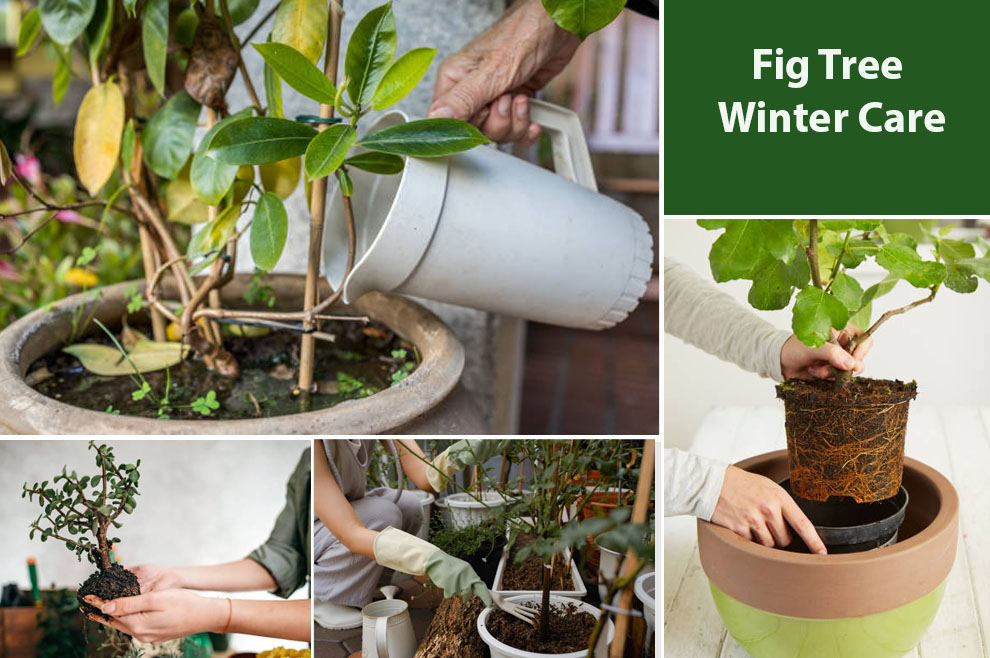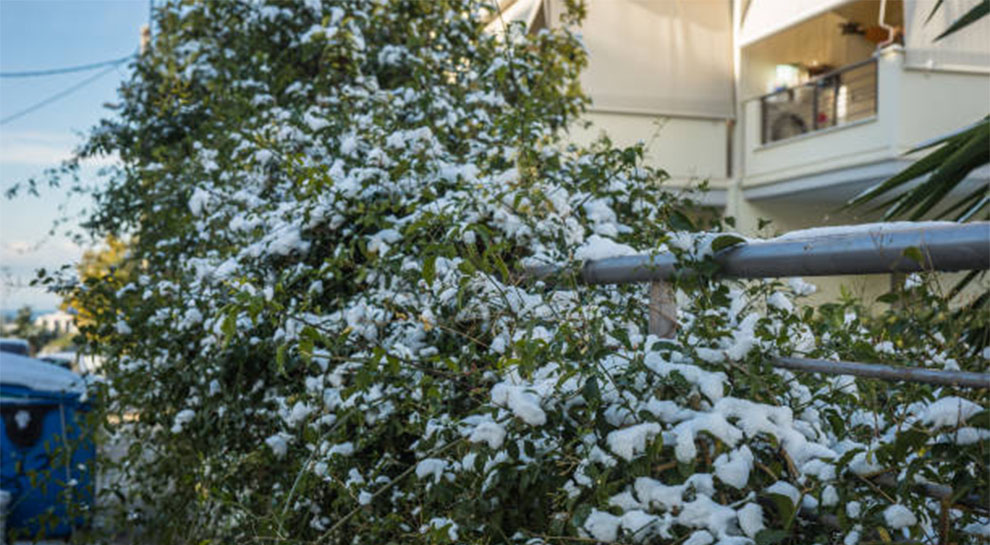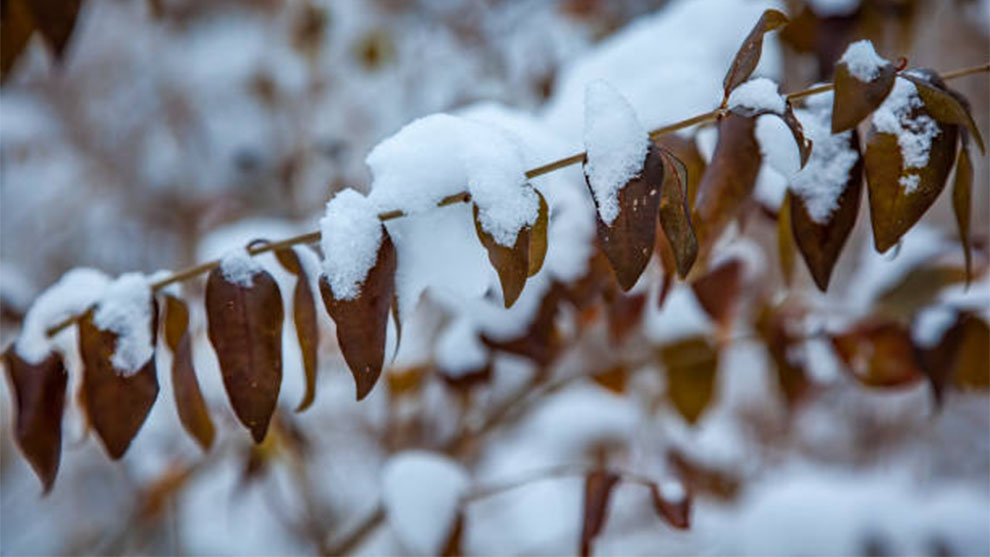Fig Tree Winter Care: Wrapping & Other Winter Protection Methods
As the temperature starts to drop, prune your fig trees. Then, wrap the tree with burlap or blankets to shield it from cold and frost. You may also use temporary protective structures or heat lights to minimize the impact of cold.

Fig trees are susceptible to cold weather. Winter care is imperative for their well-being. The single most crucial factor is guarding the fig trees from freezing temperatures. So, if you do not work for fig tree’s winter protection, it can result in detrimental consequences.
Preserving the tree’s vitality is the cornerstone of winter care. It ensures the tree’s endurance across the winter months.
When spring arrives, this stored vitality propels robust growth. Moreover, proper winter care sets the stage for a fruitful harvest the following year. A well-tended tree is healthier and yields more abundant fruit.
Covering figs in winter prevents damage to the buds and branches, preserving the tree’s inherent structure and form.
Consistent winter care also extends the fig tree’s lifespan and braces its resilience against environmental stressors. These measures ensure a fruitful and thriving fig tree in the seasons ahead.
How To Take Care of Fig Tree in Winter?
Below, we will take you through some vital measures to safeguard your fig trees during winter. It includes trimming and pruning techniques, mulching to guard the roots, and inspecting for potential diseases and pest issues.
Each step is necessary to maintain the tree’s vitality and health as it prepares the fig tree for the dormant season.
Let us dive into the specifics.
A.The timing of winter preparation for figs
Start prepping your fig tree for winter as autumn transitions into its later stages. When the temperature consistently drops below 50°F (10°C), commence winterization.
It typically occurs in late fall, around mid to late October. But you must monitor local weather patterns, as climate variations may influence the exact timing.
Begin the fig tree care in winter in this time slot to ensure the fig is adequately shielded against the impending harsh weather, protecting it from potential damage and allowing it to thrive in spring.
B. Pruning and trimming figs before and during winter
Before winter begins, you must indulge in light pruning, removing the diseased or dead branches to bolster overall fig tree health. Thinning out crowded areas helps air circulation, lowering the risk of fungal infections.
Please do not indulge in heavy pruning, as it may stimulate vulnerable new growth. For significant pruning, wait until the tree enters dormancy in late winter.
Always use clean and sharp tools, making cuts slightly above the lateral branches or buds. Monitor for crossing or weak branches that may impede growth. Remove white sprouts and suckers.
It helps the fig direct resources and energy towards productive development. Customize your approach based on the planted fig’s variety. Please note that proper trimming is vital for healthy fig growth.
C. Mulching the roots to winterize your figs
Wrapping fig trees for winter with mulch at the base can prove beneficial. You can commence this task in late fall after the growth has cooled but before it starts freezing.
Employ organic materials like wood chips, straw, or compost. Spread a two to four-inch layer, extending it in a wide circle around the tree, but leave a small gap around the trunk.
Mulch works like insulation, regulating moisture and soil temperature levels. It guards the roots from drastic temperature fluctuations and aids in retaining moisture during the dormant season, ensuring the fig tree emerges healthy in the upcoming spring.
D. Fig tree pests and diseases in winter
Vigilance against diseases and pests is imperative for maintaining the fig tree’s health. Regularly inspect the stems, leaves, and the soil around the base.
Assess for pest signs, such as spider mites, aphids, or scale insects, and promptly address any infestations. Watch out for wilting or discolored leaves that may indicate a disease infestation.
Treat the affected areas promptly using organic remedies or consult a professional if necessary.
Further, ensure proper sanitation by removing the fallen debris and leaves to prevent potential breeding grounds. Early intervention and detection are vital to safeguard your fig tree’s well-being in winter.
Winter Protection Strategies – How To Take Care Of Fig Trees In Winter?
Guarding your fig trees during winter helps ensure their productivity and health in the coming season. Below, we will 1take you through four strategies to effectively shield your fig trees and help them survive the harsh weather.
Let us understand them in detail below:
A. Wrapping fig trees for winter using frost blankets or wraps
You can start by pruning the fig, then encase the tree with burlap or blankets, securing them tightly.
Knowing when to wrap your figs in winter is vital to guard them against the harsh weather. It ascertains that it won’t endure any damage during the active growth phase after planting fig trees.
When the temperature continually goes below freezing, there is a high susceptibility to frost damage.
It is when you must consider wrapping the figs, as waiting until the initial hard frost lets the tree naturally transition into the dormant stage, making it less susceptible to any potential damage caused by the wrapping process.
Please know that timing has a primary role in the process of fig tree care in winter. If you cover them too early it can intervene with the natural process, whereas delaying it may expose the tree to harsh conditions.
Thus, wrapping at the right time helps the fig thrive and remain healthy.
B. How do you keep a fig tree warm in the winter – Providing additional heat sources!
Supplementing heat to your trees can be an excellent protective measure in areas where severely harsh conditions are anticipated. It is particularly beneficial in areas susceptible to severe winter frosts.
You can employ methods like placing a frostcloth over the tree. In addition, using a compact heater underneath or wrapping outdoor Christmas lights around the tree trunk can also help.
But please be cautious and ensure there is zero direct contact between the tree and the heating elements, as it can inflict damage.
Monitor the temperature closely and alter the heat source to ensure your fig tree stays safe from harsh weather.
C. Building temporary protective structures for fig tree’s winter protection

Building temporary protective structures is a beneficial strategy for guarding your fig trees from harsh winter elements.
Build a frame around the tree employing burlap, stakes, or PVC pipes. Drape heavy-duty tarps or frost blankets over the frame, securing them in place. This barrier provides insulation against freezing temperatures and winds.
Please ensure the structure is big enough to cover the whole tree and wide enough to offer adequate space. Please leave a minor gap for seamless air circulation.
This method dramatically lowers the probability of cold-inflicted damage and works in regions susceptible to severe winters. Regularly inspect for any shift or damage in the structure to maintain its effectiveness across the season.
D. Do fig trees need to be buried in winter?

Also called heeling in, burying fig trees for winter was a traditional method to guard them from freezing temperatures. This practice involves uprooting the tree and laying it on its side in a trench, covering the roots with soil for insulation.
However, this method has lost its prominence in recent times. Though it can offer significant protection, it has a few limitations.
Compared to wrapping fig trees for winter, burying the trees disrupts their root system, potentially causing stress and impairing growth in the upcoming season. Further, it demands significant effort and might not be feasible for more established trees.
These days, gardening enthusiasts swear by wrapping fig trees with frost blankets or other insulating materials.
Such contemporary methods guard the tree without causing any harm to the tree’s roots. Further, they also allow a smoother transition into the growing season. Consequently, burying figs for winters has fallen out of favor.
Watering During Winter – Need To Adjust This!
In the cold weather, the metabolic activity in the plant declines. Consequently, its water requirements also decline, and routine fig care changes.
Further, with diminished evaporation rates and lower growth, fig trees demand relatively less hydration, and overwatering in this weather might result in waterlogged soil and potential root damage.
Tips for Watering Fig Trees In Winter
1. Maintain soil moisture: Regularly inspect the soil by inserting your finger into the soil and water only when the top inch or two feels dry.
2. Water infrequently but deeply: As necessary, water thoroughly to encourage deep root growth, but you do not need to water daily.
3. Morning watering: Consider morning watering to ensure excess moisture evaporates during the day, lowering the probability of freezing overnight.
4. Do not overwater, as excess soil moisture results in root rot and other issues.
5. Mulch for moisture retention: Apply a thick organic mulch layer around the tree’s base to help retain soil moisture.
Altering the fig tree’s watering routine to accommodate its reduced need in winter helps offer the plant optimal conditions for a thriving dormant period.
Fig Tree Monitoring And Maintenance During Winter
Regularly monitor the fee tree during winter for its well-being. Inspect the leaves, branches, and trunk for any signs of damage or stress caused by the harsh weather.
If you notice any issues, like pest infestations or frost damage, promptly take measures. Timely intervention helps avoid further harm and ensures the tree’s health across the winter season.
Fig Tree Winter Care Indoors

When shifting your fig tree indoors for winter, ensure it receives adequate sun. You can place the pot near a south-facing window.
Further, maintain a consistent moisture level, letting the top inch dry out before you water again. In addition, proper humidity is imperative. Humidity indoors is usually low.
So, consider installing a humidifier or placing a water tray near the tree to maintain moisture. Watch out for pests, as indoor environments are conducive to infestations.
Do not overfeed the plants, and trim any excessive growth. Provide supplemental lighting with grow lights if needed.
Your indoor fig tree can thrive in the winter when you follow the above-listed tactics to the T.
Potted Fig Tree Winter Protection
To guard your potted fig trees in winter, position them in a sheltered area away from harsh winds. Before the first frost, insulate the container with a burlap or a bubble wrap.
Elevate the container to avoid waterlogging, and add a thick mulch layer on the top. Water sparingly, allowing the soil to dry partially between watering.
Consider moving the pot to a more protected spot/indoors or wrapping it with a frostcloth if the temperature drops dramatically. As spring approaches, gradually re-introduce the plant to sunlight.
By incorporating these steps, your potted fig tree will thrive in the winter.
